Table of Contents
Ready to dive into the captivating world of ink and artistry? Tattoo designs drawings on paper are where incredible body art begins. Whether you're an aspiring tattoo artist honing your skills or simply someone dreaming up your next piece of ink, this guide is your ultimate starting point. We'll explore why sketching out your ideas on paper is crucial, the essential tools you'll need, and a simple step-by-step process to bring your visions to life. But that's not all! Get ready to feast your eyes on 99+ inspiring tattoo designs, from classic motifs to cutting-edge concepts, all designed to ignite your imagination. We'll also cover the crucial steps to prepare your masterpiece, ensuring a smooth transition from your sketchbook to the skilled hands of a tattoo artist. So, grab your pencils, and let's embark on this creative journey together, turning your tattoo dreams into stunning realities, one sketch at a time!
Unleash Your Inner Artist: Why Tattoo Designs Drawings on Paper Matter
Unleash Your Inner Artist: Why Tattoo Designs Drawings on Paper Matter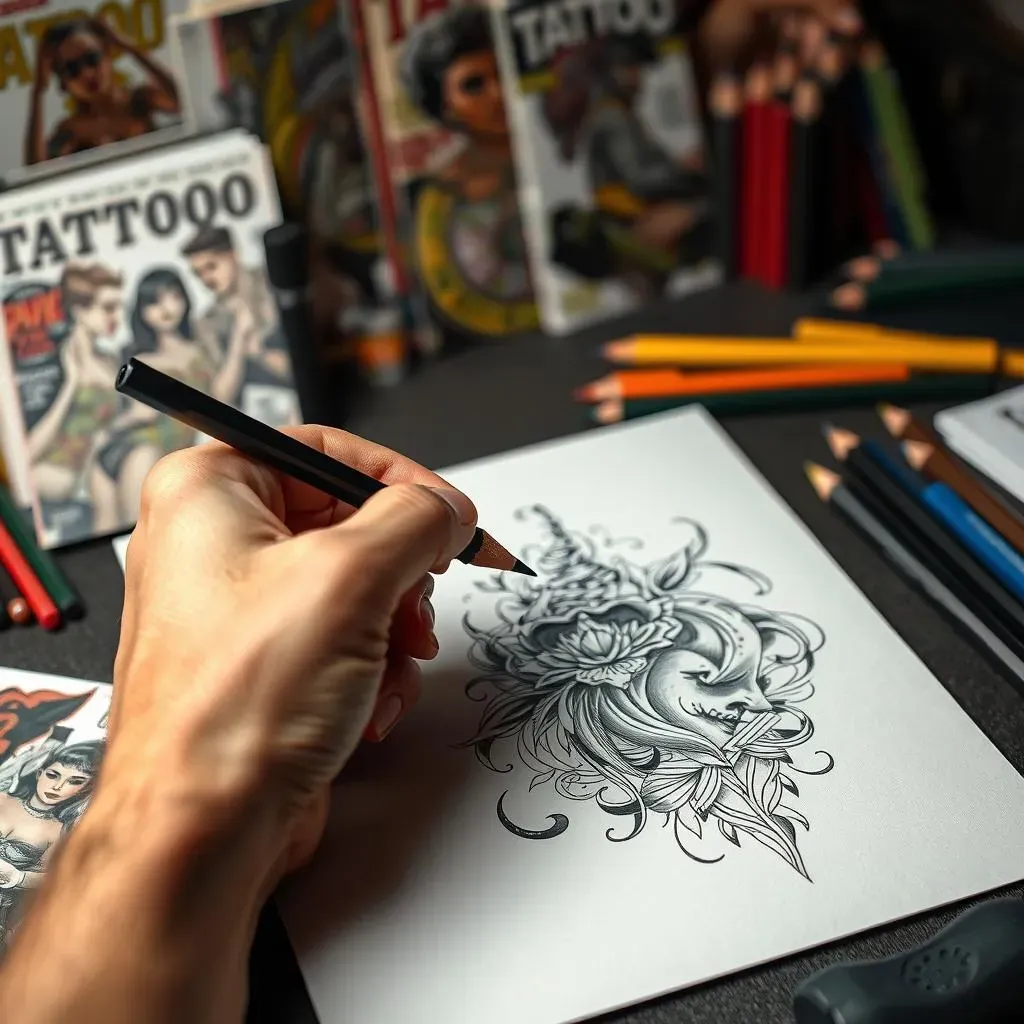
So, you're thinking about getting a tattoo? Awesome! But before you jump into the chair, let's talk about why putting pencil to paper is an absolute game-changer. Think of it this way: your skin is a canvas for life, and you want a masterpiece, right? That's where the magic of sketching tattoo designs drawings on paper comes in. It's not just about doodling; it's about exploring ideas, refining details, and making sure your vision is crystal clear before it becomes permanent.
It is a crucial step that allows you to experiment with different styles, placements, and sizes without any regrets. You can play with different elements, see how they fit together, and ensure that the final design truly reflects what you want. It's a low-pressure environment where you can make mistakes, learn from them, and improve your skills. Paper gives you the freedom to iterate, adjust, and perfect your tattoo design until it's exactly how you envision it.
Plus, a well-thought-out drawing makes the whole process smoother for your tattoo artist. They'll have a clear reference point, which minimizes miscommunication and ensures they can bring your dream tattoo to life with precision. Seriously, sketching beforehand is the secret sauce to a tattoo you'll love for years to come. So grab a pencil and start creating!
Essential Tools for Creating Stunning Tattoo Designs on Paper
Essential Tools for Creating Stunning Tattoo Designs on Paper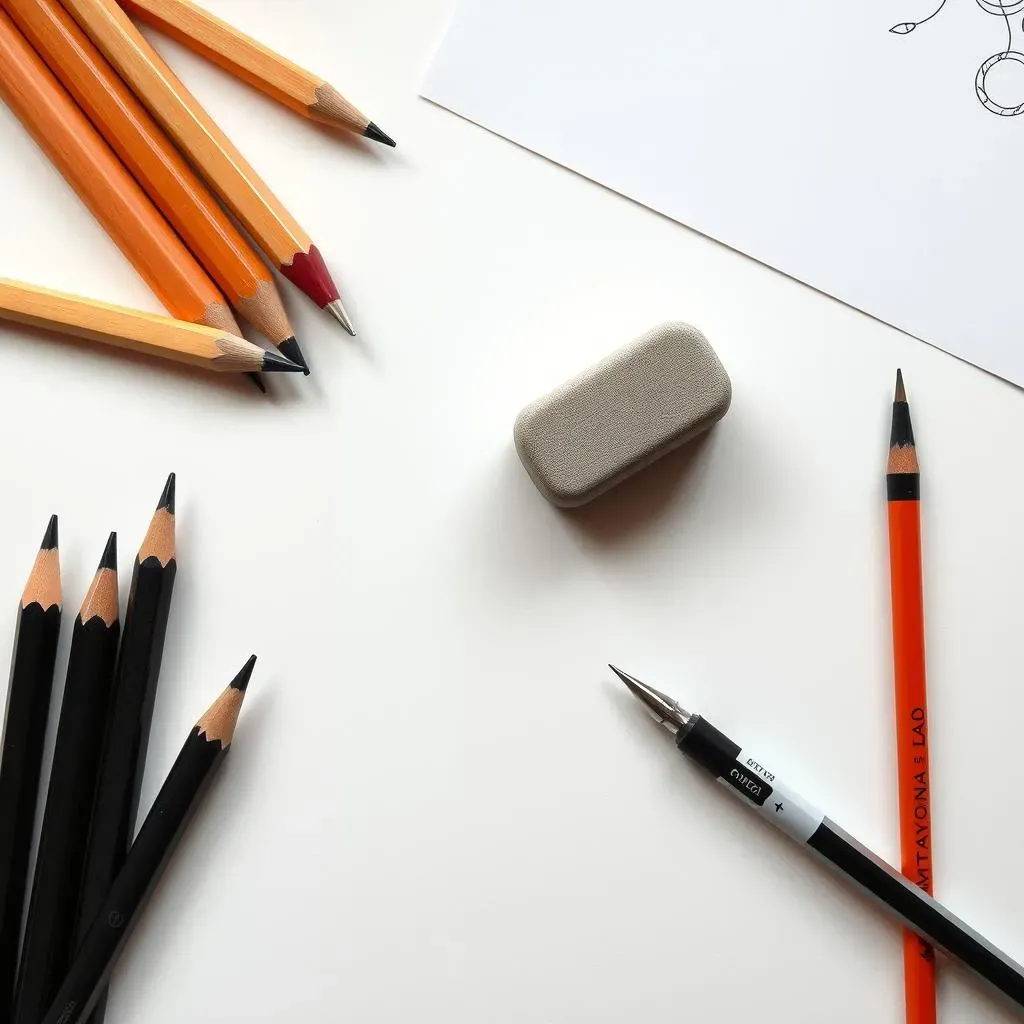
Pencils, Paper, and Erasers: The Holy Trinity
Alright, so you're ready to start sketching? Excellent! First things first, let's gather your arsenal. You don't need fancy art supplies to begin, but having the right tools can definitely make a difference. Start with a good set of pencils – I'm talking a range from 2H (hard, for light lines) to 6B (soft, for dark shading). This gives you versatility in creating different values and textures. For paper, I prefer smooth drawing paper; it allows the pencil to glide effortlessly. And of course, a quality eraser is a must-have for correcting mistakes and refining your design. A kneaded eraser is fantastic for lifting graphite without damaging the paper.
Don't underestimate the power of a good sharpener either! A dull pencil leads to frustration and messy lines. Keep those points sharp for crisp, clean details. Remember, your tools are an extension of your creativity, so invest in quality items that feel comfortable in your hand.
Inking Pens and Markers: Defining Your Lines
Once you're happy with your pencil sketch, it's time to define those lines with ink. This is where your tattoo design really starts to take shape. Fine-tipped pens, like Micron pens, are perfect for creating intricate details and clean outlines. They come in various sizes, allowing you to achieve different line weights. For bolder lines and filling in larger areas, consider using brush pens or markers specifically designed for drawing. Alcohol-based markers, such as Copics or Prismacolors, are great for blending and creating smooth gradients. However, be mindful of bleed-through on thinner paper.
Experiment with different inking tools to find what works best for your style. Some artists prefer the precision of technical pens, while others love the expressive quality of brush pens. The key is to practice and develop your own unique technique.
Tracing Paper and Light Boxes: Perfecting the Transfer
Now, let's talk about transferring your design. Tracing paper is your best friend when it comes to refining your sketch or creating multiple versions of the same design. Simply lay the tracing paper over your original drawing and trace the desired lines. This allows you to make changes without altering the original artwork. A light box can be incredibly helpful for this process, providing a bright, even light source that makes it easy to see the underlying image. If you don't have a light box, a window can work in a pinch!
These tools are especially useful when you need to create a stencil for your tattoo artist. A clean, accurate stencil is essential for a successful tattoo application. By using tracing paper and a light box, you can ensure that your design is transferred flawlessly onto the skin.
Tool | Purpose | Why it's Essential |
|---|---|---|
Pencils (2H-6B) | Sketching, shading | Versatile for creating different values |
Smooth Drawing Paper | Surface for sketching | Allows pencil to glide smoothly |
Kneaded Eraser | Correcting mistakes | Lifts graphite without damaging paper |
Fine-tipped Pens (Micron) | Creating outlines | Precise and clean lines |
Tracing Paper | Refining sketches | Allows for multiple versions |
Light Box | Transferring designs | Provides even light for tracing |
StepbyStep Guide: Mastering Tattoo Drawings on Paper
StepbyStep Guide: Mastering Tattoo Drawings on Paper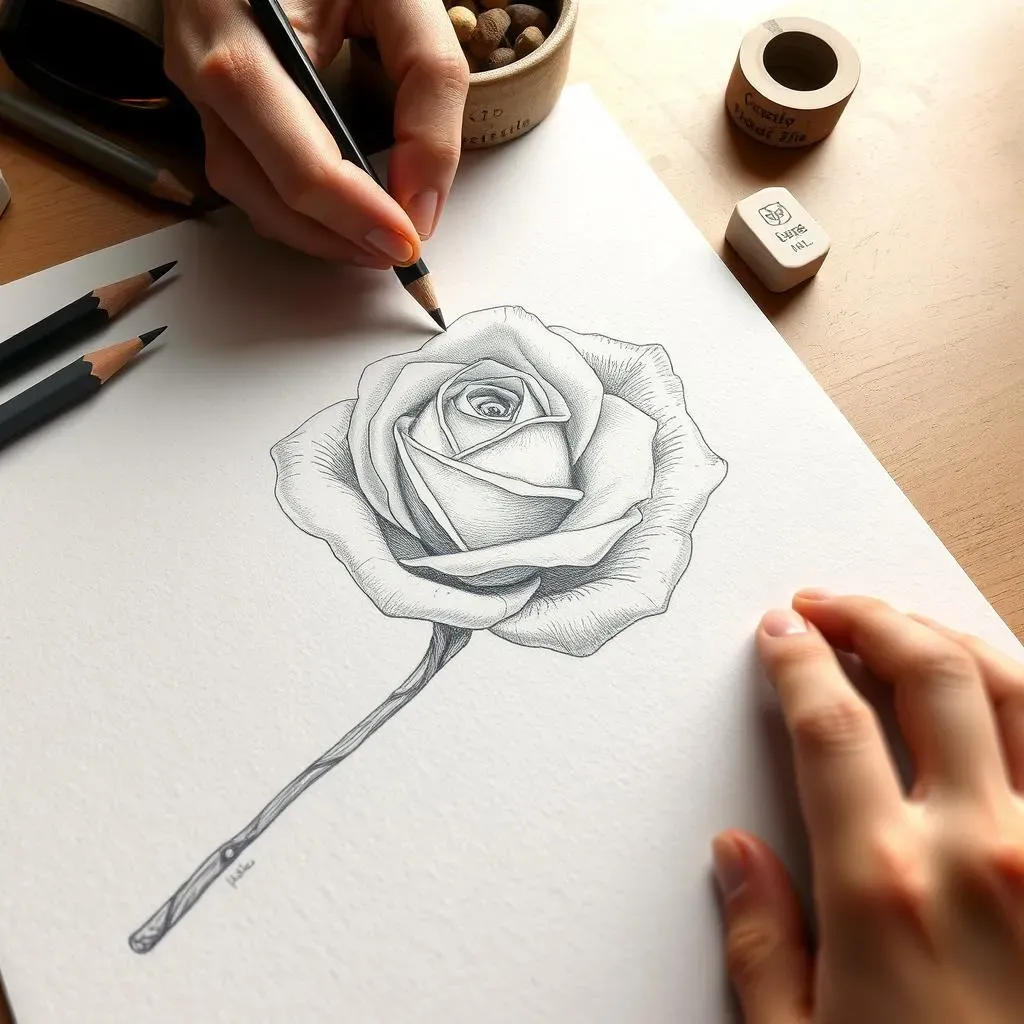
#1: Laying the Foundation: Basic Shapes and Linework
Alright, future tattoo artists, let's start with the fundamentals! Before you jump into intricate designs, it's crucial to master basic shapes and linework. Think circles, squares, triangles – the building blocks of all art. Practice drawing these shapes repeatedly, focusing on smooth, consistent lines. Don't worry about perfection at first; it's all about building muscle memory and getting a feel for your tools. Start with light pencil strokes, gradually increasing the pressure as you gain confidence. Remember, a strong foundation in basic shapes will make more complex drawings much easier.
Experiment with different line weights by varying the pressure you apply to your pencil. Thicker lines can create emphasis and define outlines, while thinner lines can add subtle details and shading. Practice drawing straight lines, curved lines, and varying angles. The more comfortable you are with these basic elements, the more freedom you'll have to express your creativity in your tattoo designs. It's kind of like learning scales on a guitar before shredding a solo!
#2: Building Complexity: Adding Details and Shading
Once you've nailed the basics, it's time to add some meat to those bones! Start by breaking down your chosen tattoo design into smaller, manageable shapes. This makes the process less daunting and allows you to focus on one element at a time. For example, if you're drawing a rose, start with the basic circle for the overall shape, then add the individual petals, leaves, and stem. Pay close attention to the proportions and spacing between each element. Reference photos can be incredibly helpful at this stage.
Next up: shading! This is what gives your tattoo design depth and dimension. Start by identifying your light source and determining where the shadows will fall. Use your pencils to create different values, from light highlights to deep shadows. Hatching (parallel lines) and cross-hatching (intersecting lines) are great techniques for creating texture and shading. Remember to blend your shading smoothly to avoid harsh lines. This is where those softer pencils (4B-6B) really shine!
#3: Refining and Finalizing: Preparing for the Tattoo Artist
You've got a design you're proud of? Awesome! Now it's time to refine those details and prepare your drawing for the tattoo artist. Carefully review your sketch, looking for any areas that need improvement. Clean up your lines, adjust your shading, and make sure everything is proportionally correct. This is where tracing paper comes in handy! Use it to create a clean, final version of your design, free from any stray marks or smudges.
Consider the placement of your tattoo and how it will flow with the contours of your body. This is something you can discuss with your tattoo artist, but it's helpful to have a general idea beforehand. Finally, take your finished drawing to a reputable tattoo artist and discuss your vision with them. They can provide valuable feedback, make any necessary adjustments, and ensure that your tattoo design translates beautifully onto your skin.
Step | Description | Tips & Tricks |
|---|---|---|
Basic Shapes | Practice circles, squares, triangles | Focus on smooth, consistent lines |
Adding Details | Break down complex shapes | Use reference photos |
Shading | Create depth and dimension | Identify your light source |
Refining | Clean up lines, adjust shading | Use tracing paper for a final version |
Placement | Consider body contours | Discuss with your artist |
99+ Inspiring Tattoo Designs Drawings on Paper: Ideas to Spark Your Creativity
99+ Inspiring Tattoo Designs Drawings on Paper: Ideas to Spark Your Creativity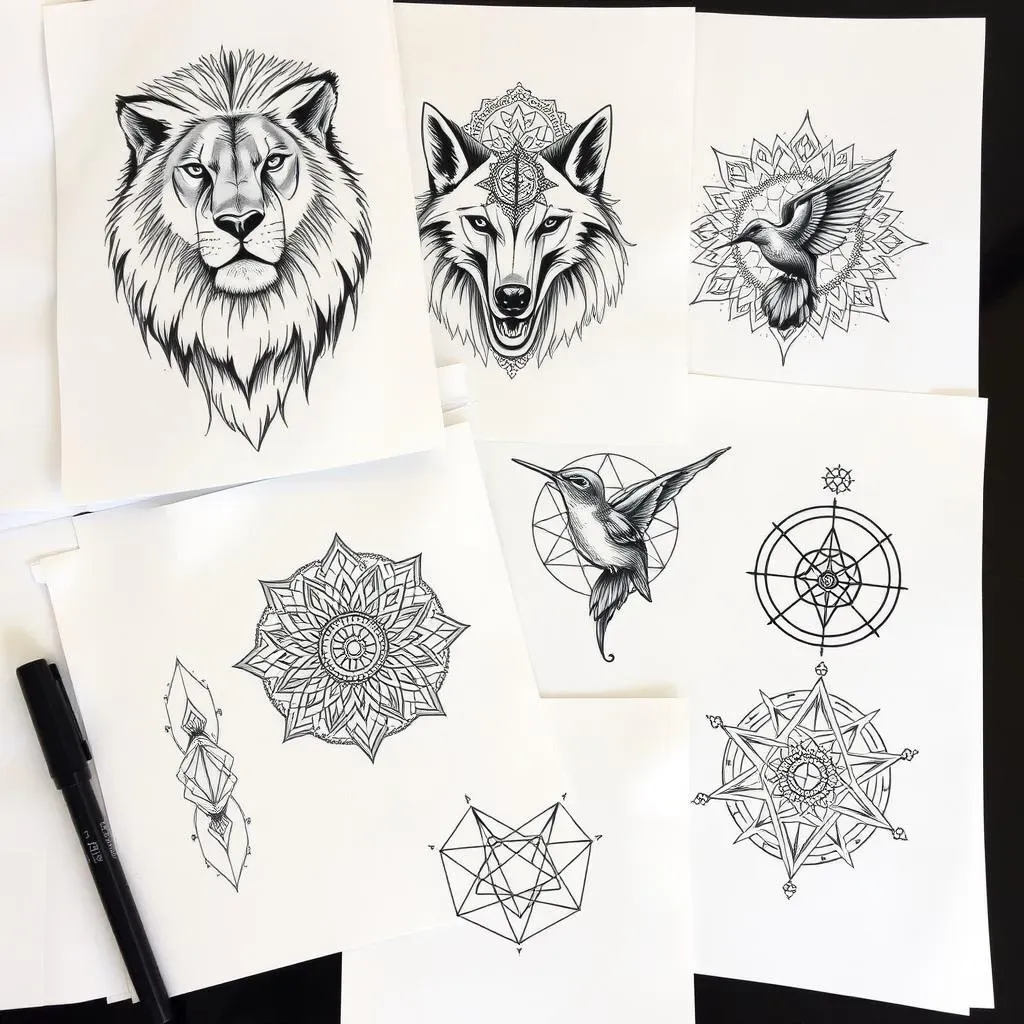
Animal Kingdom: Unleash Your Inner Beast
Alright, let's kick things off with a roar! Animal tattoos are timeless for a reason – they're packed with symbolism and can represent everything from strength and courage to loyalty and wisdom. When sketching animal tattoo designs, think beyond the standard lion or wolf. Consider a graceful hummingbird, a sly fox, or a majestic stag. Pay attention to the animal's anatomy and capture its unique characteristics. Is it sleek and powerful, or whimsical and playful? Use reference photos to study the animal's form and translate that onto paper. Experiment with different styles, from realistic renderings to stylized geometric interpretations. The possibilities are endless!
Don't be afraid to get creative with the animal's surroundings. Adding elements like flowers, foliage, or geometric patterns can enhance the design and add personal meaning. For example, a wolf howling at a moon surrounded by constellations could represent intuition and connection to the universe. Or a tiger prowling through a jungle of vibrant flowers could symbolize power and beauty. The key is to find a balance between the animal itself and the surrounding elements, creating a cohesive and visually striking tattoo design.
Animal | Symbolism | Design Ideas |
|---|---|---|
Lion | Strength, courage, royalty | Realistic portrait, geometric design, lion with crown |
Wolf | Loyalty, family, intuition | Howling wolf, wolf pack, wolf with moon |
Hummingbird | Joy, resilience, energy | Hummingbird with flowers, hummingbird in flight, stylized hummingbird |
Symbols and Geometry: The Language of Ink
Looking for something a little more abstract? Symbols and geometric patterns offer a powerful way to express yourself through ink. Think mandalas, sacred geometry, runes, and astrological symbols. These designs are often rich in meaning and can represent spiritual beliefs, personal values, or simply aesthetic preferences. When sketching these types of tattoos, precision is key. Use a ruler and compass to create accurate geometric shapes and ensure that the lines are clean and crisp. Experiment with different patterns and arrangements to find a design that resonates with you.
Consider the symbolism behind each element you incorporate into your design. For example, a mandala represents the universe and can symbolize wholeness and harmony. A triangle can represent the mind, body, and spirit. A spiral can symbolize growth and evolution. By understanding the meaning behind these symbols, you can create a tattoo that is not only visually appealing but also deeply personal and meaningful. Don't be afraid to combine different symbols and patterns to create a unique and complex design. The possibilities are truly endless!
- Mandalas: Wholeness, harmony, the universe
- Sacred Geometry: The building blocks of reality
- Runes: Ancient alphabets with magical meanings
- Astrological Symbols: Connection to the cosmos
From Paper to Skin: How to Prepare Your Tattoo Designs Drawings on Paper for the Tattoo Artist
From Paper to Skin: How to Prepare Your Tattoo Designs Drawings on Paper for the Tattoo Artist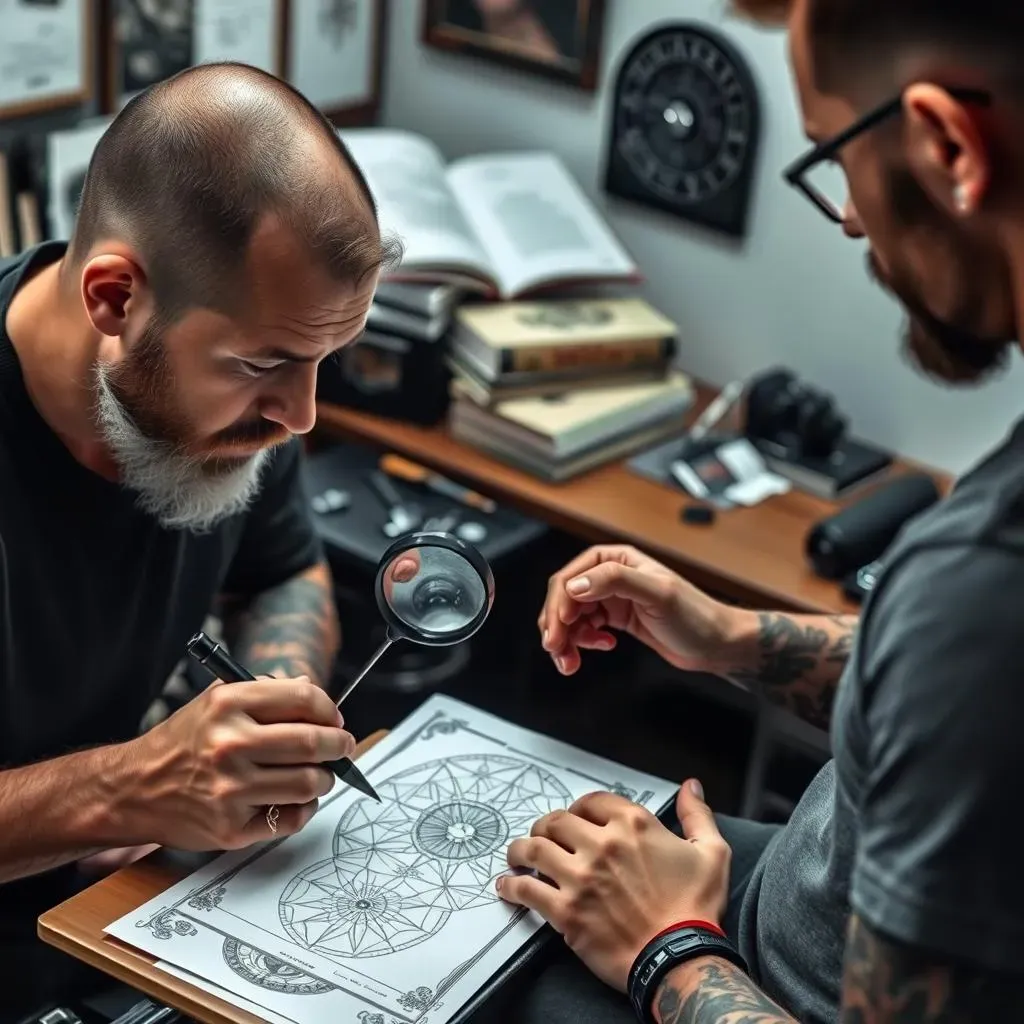
#1: The Cleanest Lines are Key
Alright, you've poured your heart and soul into your tattoo design drawing on paper. Now, it's time to get it ready for its final destination: your skin! The first crucial step is ensuring your design is as clean and clear as possible. Your tattoo artist needs a crisp, easy-to-read reference point to create a stellar tattoo. This means going over your final sketch with a fine-tipped pen, like a Micron, to create bold, distinct outlines. Erase any stray pencil marks or smudges that might confuse the artist. The cleaner the lines, the smoother the tattooing process will be.
Think of it like handing in a final exam. You wouldn't want your professor to decipher messy handwriting, would you? The same goes for your tattoo artist. A clean design minimizes the risk of misinterpretation and ensures they can accurately translate your vision onto your skin. Plus, it shows them that you're serious about the process and respect their craft.
#2: Sizing and Placement Considerations
Before you hand over your design, take a moment to consider the size and placement of your tattoo. Is it going on your arm, back, leg, or somewhere else? The size of the tattoo needs to be proportional to the area of your body where it will be placed. A tiny, intricate design might get lost on a large expanse of skin, while a massive, bold design might overwhelm a smaller area. Use tracing paper to experiment with different sizes and placements, holding the tracing up to your body to get a sense of how it will look. You can even take photos of yourself with the tracing paper in place to get a better perspective.
Also, consider how the tattoo will flow with the contours of your body. A design that looks great on paper might not translate well onto the curves of your arm or leg. Discuss these considerations with your tattoo artist. They have the experience and expertise to advise you on the best size and placement for your tattoo, ensuring that it looks stunning and complements your body's natural shape.
#3: Discussing Your Vision with the Artist
This is perhaps the most crucial step of all: communication! Schedule a consultation with your chosen tattoo artist to discuss your design in detail. Bring your clean, finalized drawing, along with any reference photos or inspiration images you have. Explain your vision for the tattoo, including the meaning behind it, the desired style, and any specific elements you want to emphasize. Listen to their feedback and be open to their suggestions. Remember, they are the experts, and they can offer valuable insights on how to make your tattoo even better.
Don't be afraid to ask questions! Ask about the tattooing process, the aftercare instructions, and any potential risks or complications. A good tattoo artist will be happy to answer your questions and address any concerns you may have. This consultation is your opportunity to build a relationship with your artist and ensure that you're both on the same page. By working together collaboratively, you can create a tattoo that you'll cherish for a lifetime.
Step | Description | Why It's Important |
|---|---|---|
Clean Lines | Outline design with a fine-tipped pen | Provides a clear reference for the artist |
Size and Placement | Consider the tattoo's proportions | Ensures the design complements your body |
Artist Consultation | Discuss your vision with the artist | Ensures you're both on the same page |
From Paper Dreams to Ink Reality: Your Tattoo Journey Awaits
Exploring tattoo designs drawings on paper is more than just a preliminary step; it's a journey of self-discovery and artistic expression. From mastering the fundamentals to unleashing your creativity with unique designs, each sketch brings you closer to realizing your perfect tattoo. Remember, the designs on these papers are just the beginning. Embrace the process, refine your skills, and collaborate with a talented tattoo artist to transform your paper dreams into a stunning, lasting work of art on your skin. Now go forth and inkspire!